- Make It Yourself Lavender Heart-Shaped Bath Bombs!
- 20 Things You Never Knew About “Down There”
- 12 Best Foods For Those Suffering From Arthritis Pain
- 12 Personal Hygiene Mistakes Almost Everyone Makes (Mom Never Told You About #4!)
- 15 Medicinal Plants And Herbs From The Cherokee People
- 12 Mind-Blowing Benefits Of Drinking Coconut Water During Pregnancy
- 12 Outstanding Winter Foods That Won’t Fatten You Up Like A Christmas Turkey
How To Eat Healthy And Feel Great On The Cheap!

Photo credit: bigstock.com
We’ve all heard it a million times: Eat natural, organic foods. But when you go to your local big box “Whole/Joe/Cost/Company” store, five little produce items can shoot your food budget for the week! You want to eat healthy, you know it will make you feel great, you know it will stop chronic disease, premature aging, even cancer, but how can you argue when the local burger joint has a family deal with eight burgers and sodas for 15 bucks and organic broccoli is $9 a pound?!
You don’t have to choose between going into debt and eating junk. You probably know all the benefits of eating healthy; now we want to show you exactly how you can do it on a shoestring.
First off, let’s talk about all the things you need to remove from your grocery list. The following food items or ingredients are not only unhealthy, but they offer you next to no nutrition for your hard-earned food dollar:
- Trans-Fats – This includes margarine and fast food such as burgers and fries.
- Sugar – Not only is this substance addictive, it is the leading cause of weight gain and heart disease.
- White Bread – This includes most things made from white flour like pasta, donuts, bagels, rolls and biscuits.
- Vegetable Oils and Seed Oils – Soybean oil, corn oil and canola oil are all GMO products, which are detrimental to your health. Think coconut oil or olive oil.
- Diet or Low-Fat Foods – Most of these are extremely processed foods (not to mention expensive) that make up for that low fat label with high amounts of sugar, artificial sweeteners and/or salt.
- Artificial Sweeteners – These chemical sweeteners have been linked in numerous studies to weight gain and cancer. Choose raw, organic honey or stevia instead.
Of course, cutting out these foods usually means you are going to have to learn to at least cook basic meals at home, but this is a valuable skill you will never regret having. There are tons of recipes and tips for saving time by planning your meals in advance and using slow cookers for those of you who are short on time.
Now that you know what you should not have on your list, let’s start looking at the foods you should be adding to your grocery list. Ready? Get out that pencil and paper!
1. Brown Rice
It takes a bit longer to cook, but if you cook it in advance, this is a super cheap healthy carb that goes with just about everything. You can use it as a side dish, add it to salads, soups, casseroles, and stir fry dishes, which are healthy and very inexpensive. A one-pound bag of brown rice costs (on average) about $1.75. This makes each serving of rice a tiny little 18 cents!
Continue to Page 2
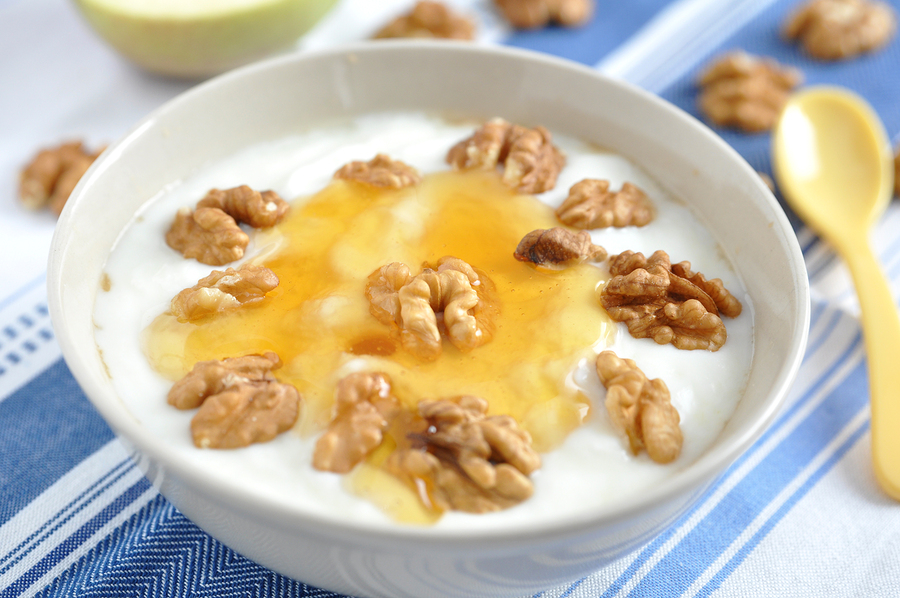
Photo credit: bigstock.com
2. Greek Yogurt
This is the perfect snack, and with a few nuts or pieces of fresh fruit it could be a dessert; or mixed with granola, it becomes the perfect breakfast! Most containers come in six-ounce or eight-ounce servings. You might save some money by buying a larger quart size and then simply spooning out whatever portion size you need. Individual servings run about 99 cents, and you might cut that down to about 75 cents if you buy larger containers.
3. Old Fashioned Steel Cut Oats
You cannot beat oatmeal for a healthy breakfast, muffins, homemade cookies, and even served with some jam as a dessert. On average, oats run about 13 cents per serving. Oatmeal is quick and easy, not to mention very versatile.
4. Frozen Veggies
Yes, fresh veggies are best, but when the price is beyond your means, frozen veggies are a great deal! A one cup serving of frozen vegetables cost about 25 cents. Now you need to do some price shopping, as certain brands and sizes cost more than others. There is no difference between name brands and store brands. In fact, most name brand companies package the same product for store brands; they simply use a different package! If you have a freezer (which is a great investment!), you can buy large bags or buy several packages when they’re on sale.
Continue to Page 3
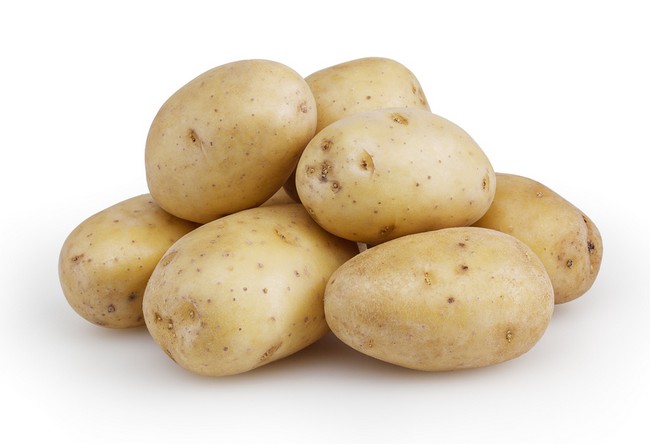
Photo credit: bigstock.com
5. Potatoes
Of course, Yukon Gold potatoes are going to cost considerably more than plain old Russet potatoes, but the nutrition is the same. Many times, you will find white potatoes for the same price as Russet potatoes. Check prices and be sure to buy plenty when you find them on sale. Since potatoes are grown underground, they are very low in pesticide contamination, so buying conventional here is okay. An average price is about 33 cents per potato, and when you consider all that you can do with them, they are a super bargain!
6. Pinto Beans
Actually, any kind of bean is a good choice, but many Americans are familiar with pinto beans. Beans are great because you can buy them in large bags or in bulk, and they last forever! (When stored properly, of course.) Depending on the size of the package, pinto beans are downright dirt cheap! A 25-pound bag runs about 64 cents a pound! Bought in bulk, you can often find prices for about 89 cents a pound, and even those small one-pound bags are still only about $1.25 a pound. Start thinking Mexican food! Pinto beans are great for burritos, nachos, tostadas, or as a side dish.
7. Marinara Sauce (Jar)
Although you might find canned sauce cheaper, stick with glass jars to avoid BPA contamination. You can make your own sauce cheaper still, but on those nights when everything is falling apart, and you need a quick meal fast, homemade pasta dishes (made with pasta cut from squash) is a real time saver. You can also use it in casseroles, homemade pizza, even your own Italian meatball sandwiches! You can usually buy a 28-ounce jar of marinara sauce for about $1.89. That works out to 28 cents per half cup serving.
Continue to Page 4
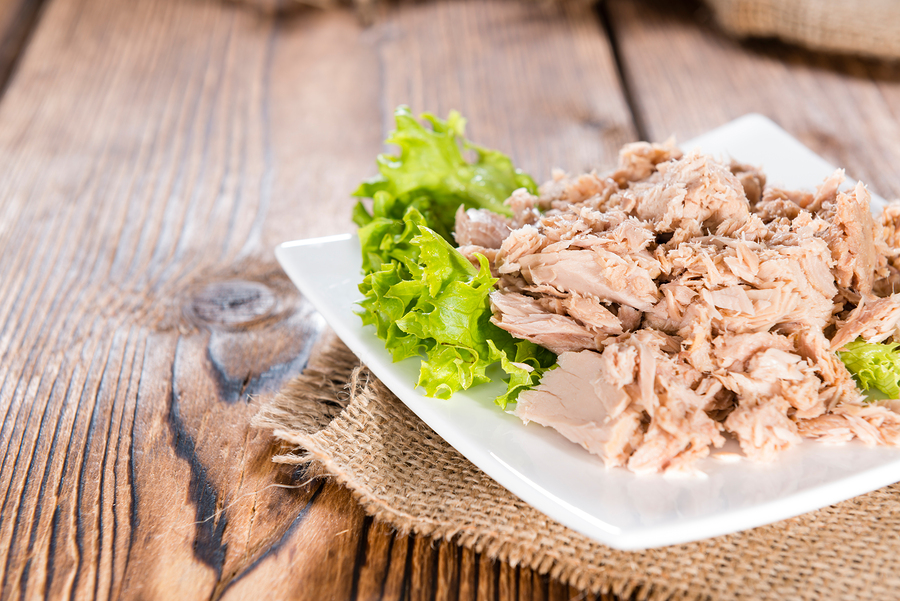
Photo credit: bigstock.com
8. Canned Tuna
For good health, experts recommend eating fish at least twice a week. Since wild caught salmon can be super expensive, don’t forget about tuna! Pick light, canned tuna over albacore tuna for lower levels of mercury. An average six-ounce can is considered to be two servings and costs about 99 cents, on average. Even if you eat an entire can, spending 99 cents on a can of healthy tuna fish beats the heck out of a 99 cent fast food burger.
9. Whole Wheat Pita Bread
Is there anything you can’t make out of a pita pocket? Sandwiches, individual pizzas, flatbread appetizers — anything you can think of! On average, you can buy a package with six pita pockets for about $1.79. This works out to about 30 cents per pita. Kids are especially fond of pita pockets, and they are so much healthier than white bread!
10. Lentils
These aren’t as popular in America as they are in other countries, but look online for ways to cook them and you will soon look forward to eating them. Lentils are great in soups, stews, salads, and casseroles. They cook quickly, and do not require any pre-soaking, so you can substitute lentils for rice as a nice change of pace. Lentils are super inexpensive, too. A one-pound bag of lentils runs about $1.29 on average, which make lentils about 10 cents per serving! Don’t be fooled by their tiny size. Like rice, lentils swell once they are cooked!
Continue to Page 5

Photo credit: bigstock.com
11. Tea
Since you are going to be dumping sodas from your grocery list, you are going to have plenty of room for tea. Depending on the brand and type of tea you choose, you can buy a good quality tea for about 10 to 20 cents a bag. Tea is loaded with healthy antioxidants and is known to lower the risk of heart attack. Be careful not to buy super cheap teas (such as those from China), as they can contain pesticides. Stick with store brands or brands that you are familiar with. Even children like flavored teas such as peppermint, orange, or raspberry.
12. Oranges
You gotta love these cheery little orange balls of sunshine! Everyone loves the taste, and they are super delicious whether you eat them as they are or drink them as juice. They are also a natural flavoring for cooked foods such as pork or chicken. One average-sized orange has all the vitamin C you need for one day! Since most people eat navel oranges, you can buy conventional as the thick peel saves the fruit inside from becoming contaminated. At certain times of the year, oranges cost about 99 cents a pound! On average, you can pick up a nice, juicy orange for your lunch for about 34 cents! What a bargain!
13. Peanut Butter
If you have a few minutes, you can make your own by simply grinding up some fresh peanuts and a drop or two of olive oil in your blender. However, if you don’t feel comfortable with that, commercial peanut butter is still a terrific bargain. Peanut butter is healthy, has tons of vitamin E, zinc, healthy fats, and protein. To avoid partially hydrogenated fats, look for a brand that states it only contains peanuts and salt. Buying store brands can save you some serious bucks. On average, a typical two-tablespoon serving is only about 20 cents.
Continue to Page 6
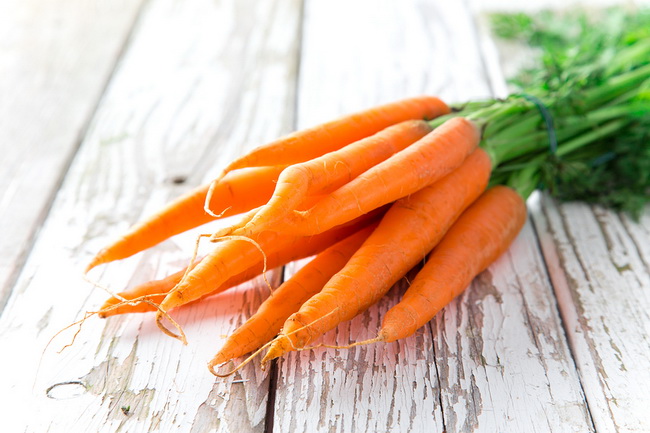
Photo credit: bigstock.com
14. Carrots
This is another super versatile veggie that doesn’t get enough attention. Kids love carrots cooked because it makes them sweet and, since they grow underground like potatoes, you can feel comfortable buying conventional carrots. These are loaded with vitamin A for healthy eyes and skin as well as an improved immune function. A one-cup serving of carrots is a tiny 32 cents.
15. Cabbage
There are no better cancer fighting veggies on this planet than cruciferous vegetables. Why not cut your risk of cancer and save big bucks on your grocery bill by eating more cabbage? All types of cabbage are super healthy for you, so pick the kind you like best or go for an assortment of colors. Add cabbage to your soups, salads (who doesn’t love coleslaw?), sandwiches, stir fries, you name it! Cabbage is also good for your waistline at a tiny 22 calories per cup. On average, you can buy cabbage for about 27 cents per cup. Who knew that fighting cancer could be so cheap?
16. Sweet Potatoes
You can beat your cravings for French fries by making your own baked sweet potatoes. These are good any time of the year and contain more nutrition then regular potatoes. You can find these, on average, for about $1.75 per pound. Depending on its size, of course, this could mean you can enjoy a sweet potato for about 45 cents! That’s cheaper than even the smallest serving of fries!
Continue to Page 7

Photo credit: bigstock.com
17. Onions
Don’t pass up the onions because you think they don’t add much to your diet. Onions are powerful cancer fighters and add flavor to just about anything: Soup, stir fries, potatoes, even salads. You can buy conventional onions without worry because these are grown underground. Onions have tons of health benefits because they contain polyphenols, so go ahead, add some onion to that sandwich and feel good about it!
18. Tofu
Although vegetarians swear by tofu, most omnivores have yet to try it. Don’t be afraid to try new things! Tofu actually has almost no flavor; however, it absorbs whatever you are cooking it with. At about 50 cents for a four-ounce serving, what have you go to lose? There are hundreds of recipes online, so look for one that uses foods you already like and give it a go!
19. Chicken Breasts
When you shop for these, you can find some amazing bargains. This is where having a freezer will really pay off. If you look carefully, you can find store brand, boneless breasts for 99 cents a pound! Even on non-sale days you can usually find chicken breasts for about $2.99 per pound, which is still a great deal. Bake some in advance, shred them, and then freeze them for later use.
Continue to Page 8
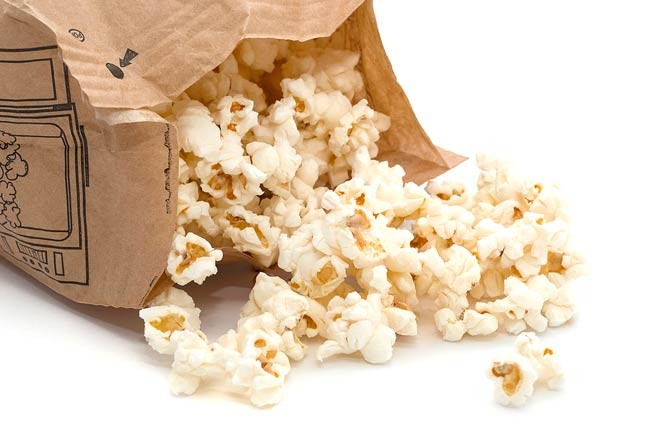
Photo credit: bigstock
20. Popcorn
You might not think about it this way, but popcorn is actually a whole grain, which everyone knows is super good for you! Don’t go for those expensive and very unhealthy microwave popcorn bags. Go for bulk popcorn, which runs about $1 for a one-pound bag. Cook it yourself in a pot or invest in an air popper. Popcorn is a great source of fiber, no one ever turned down popcorn as a snack, and it’s even good cold! Drizzle a tiny bit of honey over some popcorn, add a handful of almonds, shake it all up in a baggie and you have an instant, tasty snack you can take anywhere!
READ ALSO: 11 Most Powerful Foods To Protect You From Cancer
Of course, this is just the tip of the iceberg. There are plenty of other inexpensive options if you look for them.
Extra Tips:
- Visit your local farmer’s market for cheaper, organic options.
- Buy produce when it is on sale and freeze it.
- Look for sales, use coupons, and plan your meals accordingly.
- Try less expensive cuts of meat and slow cook or marinate them.
- Go meatless at least once per week or for more savings, twice a week.
- Plan and prep meals to maximize savings.
- Keep your fridge, freezer, and panty organized.
- Label leftovers so you can eat the before they go bad.
- Try using leftovers as lunches for the next day.
- Cook at home as much as possible. Save eating out for special occasions.
Eating healthy does not necessarily mean you need to spend a fortune. Wholesome, natural foods are all around us. We just need to plan and look for them.
References:

































John Sowansky
Jan 20, 2017 at 6:45 pm
Popcorn is a great source of fiber, no one ever turned down popcorn as a snack, and it’s even good cold! “NO ONE EVER TURNED DOWN POPCORN…..”!! FUPOheads do. That’s Fungus Until Proven Otherwise heads, followers of Doug Kauffman and knowthecause.com.
Full article: https://naturalon.com/eat-healthy-feel-great-cheap/view-all/#ixzz4WLbKEfji